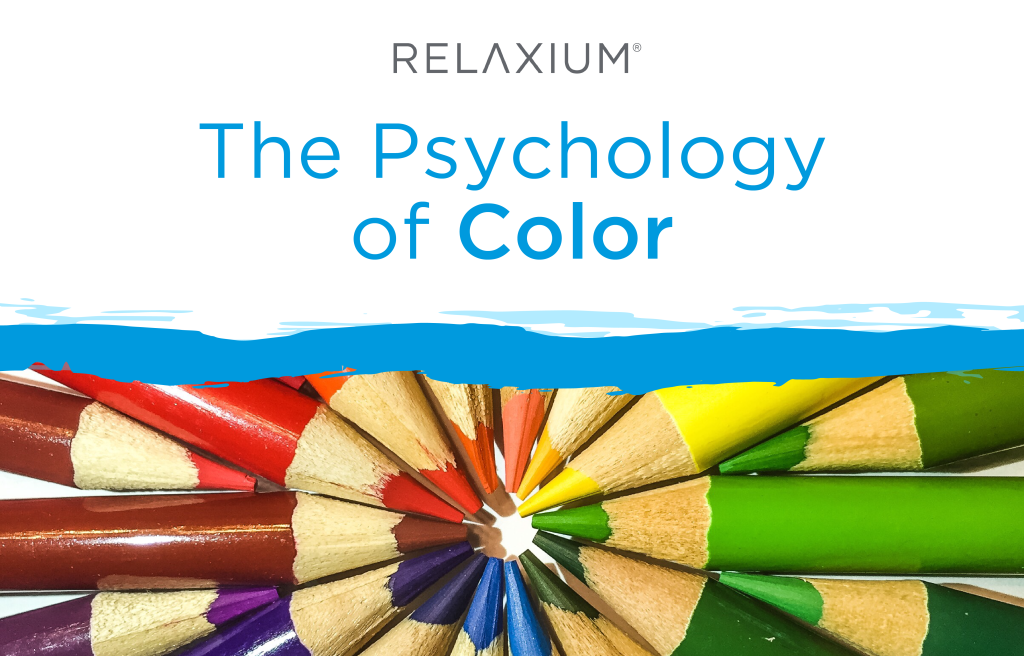The physiology of color is an important part of our lives. Whether you realize it or not, they influence many parts of our daily experiences. They can influence our moods, behavior, and even our decision making processes. Have you ever wondered why you’re more drawn to certain colors than others? There is actually science behind the psychology of different colors. In this blog we’ll explore the relationship between colors and our mood and behaviors. We will discuss the science behind color perception, and even touch on color being used in therapy.
Color & Mood
There are actually psychological effects of different colors on our mood. Warm colors like red, orange, and yellow can evoke feelings of energy, passion, and excitement. These colors tend to be used in marketing and advertising to create a sense of urgency in the consumer. Then there are cooler colors like blue, green, and purple that have a more calming effect. These colors can promote relaxation, balance, and tranquility. These colors are often used in areas where they want people to feel calm and relaxed, such as schools and hospitals. Certain shades of color can even have an impact on our moods. For example, a bright shade of yellow can be associated with happiness and positive energy, while dark shades of blue can be associated with sadness and gloominess. Color has a powerful impact on our emotions and state of mind, and can be used to influence our overall mood.

Color & Behavior
Color also has a significant impact on our behavior, because it can often influence our decisions. Certain colors have been shown to stimulate our senses and even increase our energy levels. The color red has been associated with urgency, which can increase our productivity and increase overall motivation. Since cool colors like blue and green have a more calming effect, it can lead us to be in a more relaxed state of mind. Just an interesting way color psychology can connect with behavior.
Color Therapy
Color therapy, also known as chromotherapy, is a holistic practice that uses colors to promote physical and emotional wellbeing. The idea behind color therapy is that different colors each have unique vibrations that can impact our mood and energy, and can be used for different health issues. Color therapy can be done through a variety of methods. Some of these include visualization exercises, exposure to colored light, and color coded foods or supplements. Color therapy can have many positive benefits. Choosing Therapy lists some of these benefits as: Enhanced time management, decreased seasonal affective disorder symptoms (SAD), improved sleep, increased energy, reduction of anger, and overall improved relationships. An example of a form of color therapy is blue light therapy. This type of color psychology is used to treat seasonal affective disorder (SAD) symptoms. Another color example is violet being used to treat insomnia, migraines, and emotional imbalances due to it being associated with spirituality, intuition, and inner peace.

The Psychology of Different Colors
Each color impacts our mood and behavior differently. According to VeryWellMind, there are actually symbolic meanings behind each color. They describe red as a color that can evoke passion, excitement, and love. Pink is often associated with soft, reserved, and earthy feelings. Purple is thought of as mysterious, noble, and glamorous. Blue evokes feelings of wisdom, hope, reason, and peace. Green is associated with nature, growth, and freshness. Yellow is linked to hope, joy, danger, and positivity. Orange is often associated with warmth, kindness, and joy. White evokes feelings of truth and indifference. And lastly, black represents feelings of mysteriousness, coldness, and being noble.
Colors can also have a significant meaning for different cultures. An example of this is in Western cultures, the color white is usually associated with purity and innocence. However, in some Asian cultures, white is associated with being the color of mourning. Another example is red being the symbol of good luck in China, but being associated with danger in some African countries.
Color psychology has a profound impact on our lives, from the way we feel to the way we make decisions. It’s important to understand the psychology of colors, their role in therapy, and how colors in our environment impact our wellbeing.

Relaxium Calm
Cooler colors like blue, green, and purple give off a calming effect and can often promote feelings of relaxation and tranquility. However, sometimes color therapy may not be enough if one is suffering from stressful thoughts. In order to promote relaxation, elevate your mood, and supply your body with essential nutrients, consider trying Relaxium Calm. This mood enhancing supplement is designed with relaxation promoting ingredients such as Ashwagandha, Magnesium Citrate, and Passionflower to help one attain mental clarity and stress relief.
Consider trying Relaxium Calm today for only $28.88. Just use promo code CALMBLOG28 at checkout to save on calm!
At Relaxium, we have a simple mission in mind – to create affordable, safe, and effective supplements. Through extensive research, we created four life enhancing supplements: Relaxium Sleep, Relaxium Calm, Relaxium Immune Defense, and Relaxium Focus Max. We use a perfect synergistic blend of ingredients in our products to ensure results. If you are interested in trying our Relaxium products, click here for more information!
To restful and healthy days ahead,
The Relaxium Team
*These statements have not been evaluated by the Food & Drug Administration. This product is not intended to diagnose, treat, cure, or prevent any disease.
Sources:
[1] Color Psychology: Does It Affect How You Feel? (verywellmind.com)

